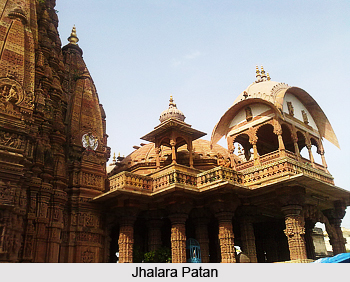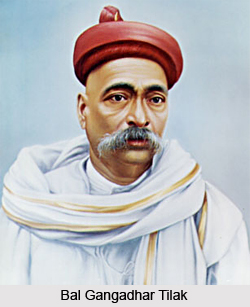 Administration of Jhalawar district is carried out by the District Collector. Jhalawar district is identified as the 17th district of Rajasthan. Various district level departments and offices are located at the district headquarters. District-level officials work while sitting in Jhalawar. Time-to-time administrative tours are organized to bring up and solve the problems of rural areas. There are Six Sub Divisional Officers (SDOs) who work at the division level to distribute the power at the local level. Jhalawar district has six sub-divisions. These are - Jhalawar, Aklera, Bhawani Mandi, Pirawa, Khanpur and Manoharthana.
Administration of Jhalawar district is carried out by the District Collector. Jhalawar district is identified as the 17th district of Rajasthan. Various district level departments and offices are located at the district headquarters. District-level officials work while sitting in Jhalawar. Time-to-time administrative tours are organized to bring up and solve the problems of rural areas. There are Six Sub Divisional Officers (SDOs) who work at the division level to distribute the power at the local level. Jhalawar district has six sub-divisions. These are - Jhalawar, Aklera, Bhawani Mandi, Pirawa, Khanpur and Manoharthana.
The district of Jhalawar is divided into 6 blocks (Panchayat Samitis). Each block has a BDO (Block Development Officer) to serve as the representative of district administration, in the rural areas. The six blocks are at Bakani, Dag, Jhalara Patan, Khanpur, Manohar Thana and Sunel. Various development works and projects at the rural level. There are a number of development works and projects at the rural level, i.e., the level of the Gram Panchayat, which are run through Block Offices. One Gram Sevak is appointed at each Gram Panchayat to keep record of the development works and to project required development works. `Gram Sabha` (Village Meetings) are organized on fixed intervals to discuss about development of villages.
There are seven tehsil headquarters in the district of Jhalawar. The seven tehsils in the district are- Aklera, Gangdhar, Jhalara Pathan, Khanpur, Manohar Thana, Pachpahar and Pirawa. Each one of the tehsils is headed by a Tehsildar, who is the administrative officer of the same. The entire department of the Tehsildars works in accordance with the Land record system to serve the interests of the rural farmers and landholders. A tehsil contains a number of Patwar Mandals. Reach of the Patwar Mandals has a Patwari who serves the landholders and farmers.
 The rural population of India, which makes up almost three-fourths of the entire population, is characterised by low income levels which is not sufficient to ensure a quality of life that is compatible with physical well being. In order to combat this, District Administration in accordance with Central and State governments is spearheading the frontal attack on rural poverty, through its various programs. These programs endeavour to reach out to the most disadvantaged sections of society, and provide them with means of employment and to improve infrastructure relating to their life-supporting system.
The rural population of India, which makes up almost three-fourths of the entire population, is characterised by low income levels which is not sufficient to ensure a quality of life that is compatible with physical well being. In order to combat this, District Administration in accordance with Central and State governments is spearheading the frontal attack on rural poverty, through its various programs. These programs endeavour to reach out to the most disadvantaged sections of society, and provide them with means of employment and to improve infrastructure relating to their life-supporting system.
The Rural Development and poverty alleviation programmes are implemented on a decentralized basis throughout the country. At the level of the centre, Ministry of Rural Development has been implementing these programs in the rural areas. The Ministry releases the central share of funds, policy formulation, overall guidance, monitoring and evaluation of the programmes. At the level of the state, Secretary of Rural Development is in charge of implementation of the programs. Finally, at the level of the district, the Zila Parishad is responsible for implementing the programs for rural development. The governing body of the Zila Parishad includes the Members of Parliament, the Members of the Legislative Assembly, district level officials of related departments and the representatives of the weaker sections of society. At the level of the blocks, it is the Block Development Officer and at the village levels, the Gram Sevaks who are responsible for the implementation of rural development plans.
The Zila Parishad at the Jhalawar District is accordingly working in keeping with the plans for rural development. There are a number of plans and projects which the Parishad is working on. These include the Vidhayak Sthaniya Kshetra Vikas Karyakram (MLA Local Area Development Program), Swarna Jayanti Gram Swarojgaar Yojana, Awasiya Rin / Anudaan Yojana, Daang Kshetriya Vikaas Yojana, Grameen Vikaas Kendra Yojana
(Rural Development Center Scheme), Samudayik Jalotthaan Yojana, MADA Scheme, Bekunth Dahm Yojana, Shanti Priya Gram Yojna, Dindayal Upadhyay Yojna, Guru Golwolker Yojna, Swa Vivek Yojna and Total Sanitation Programme / Nirmal Gram Yojna.
Discussed above is the system of administration in the district of Jhalawar.



















